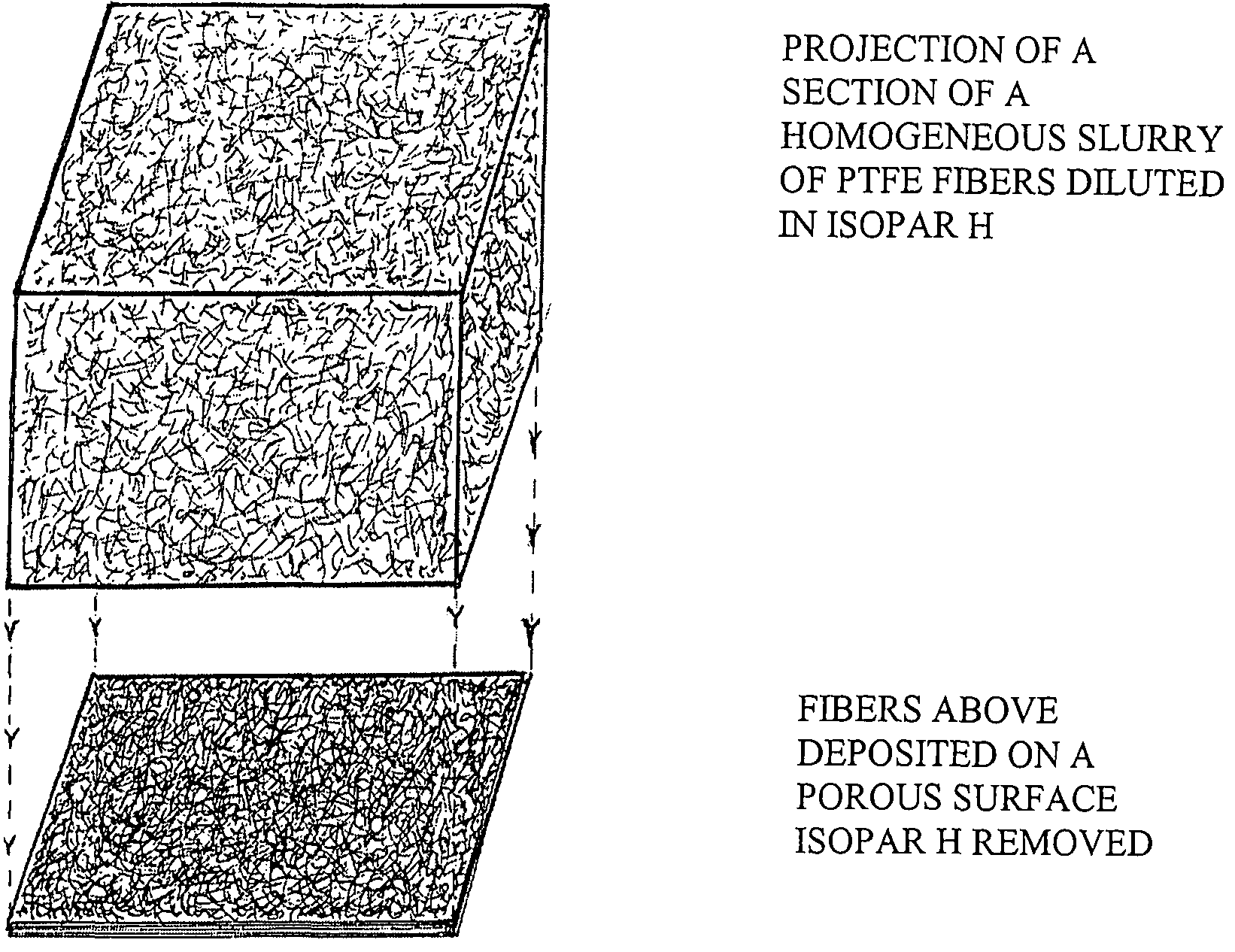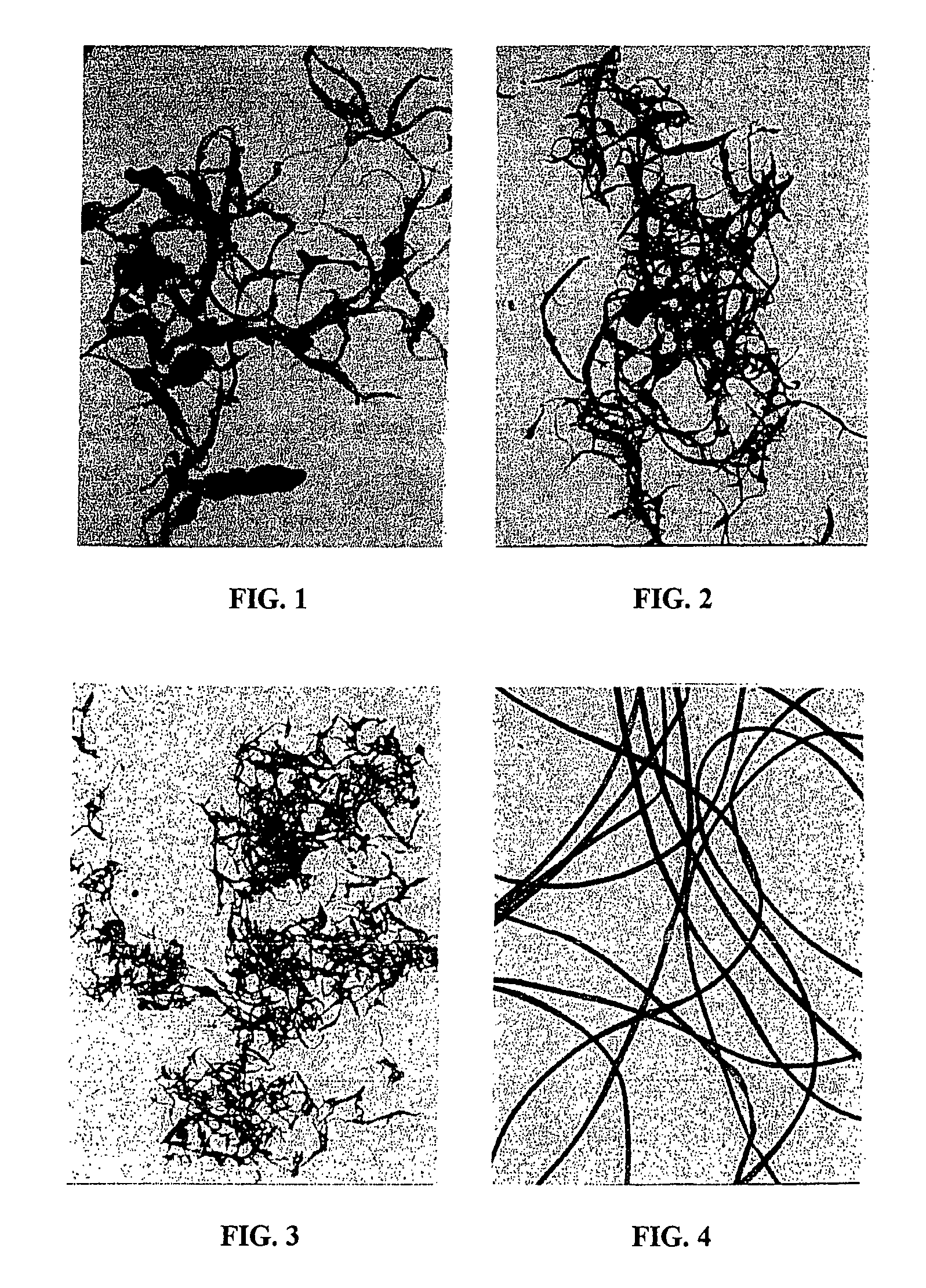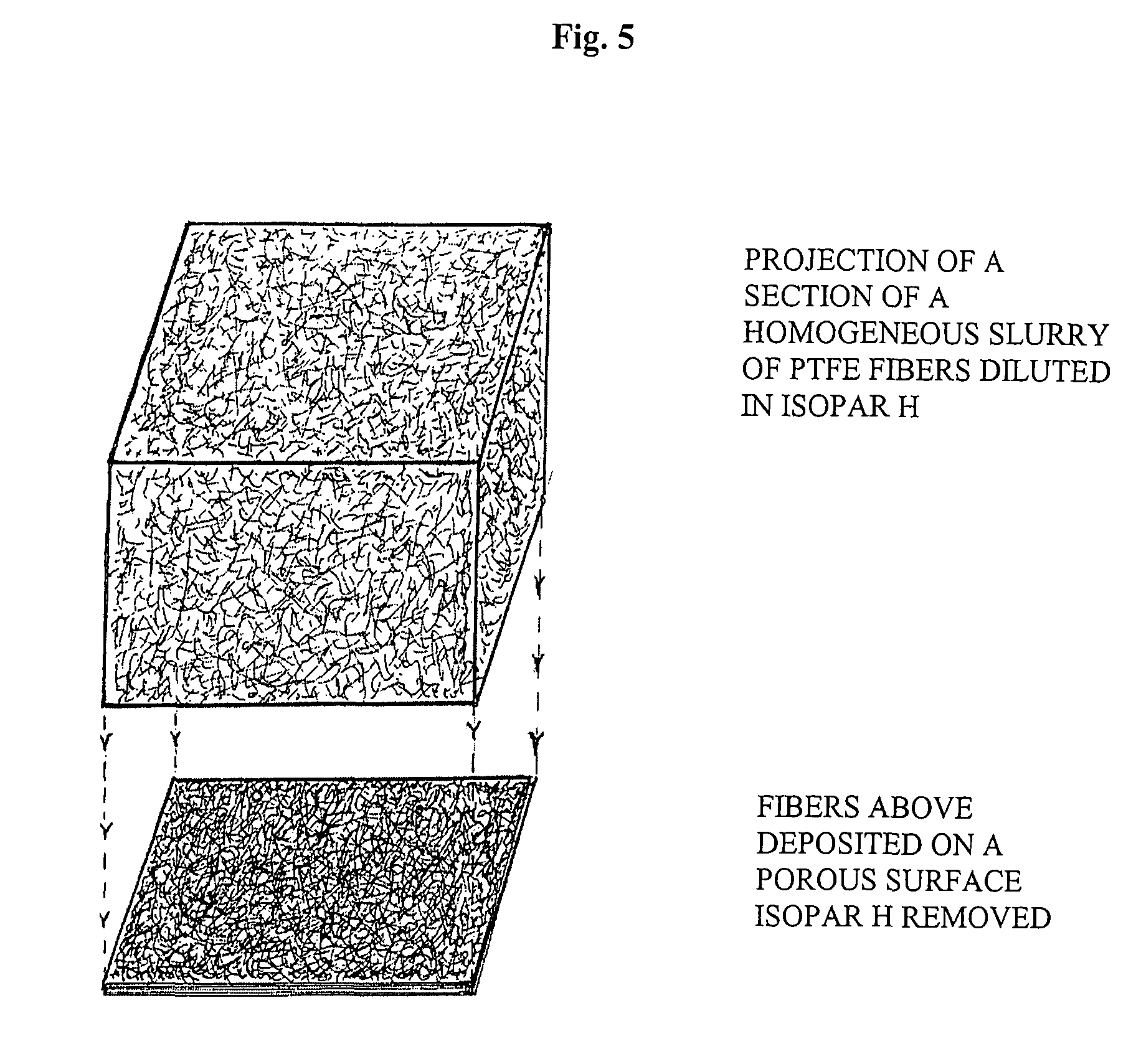Methods for continuous processing polytetrafluoroethylene (PTFE) resin
a technology of polytetrafluoroethylene and resin, which is applied in the direction of grain treatment, manufacturing tools, centrifuges, etc., can solve the problems of inability to meet the needs hoped for ptfe resin, inability to melt processable types, and high resin cost, so as to save resin cost and less cost
- Summary
- Abstract
- Description
- Claims
- Application Information
AI Technical Summary
Benefits of technology
Problems solved by technology
Method used
Image
Examples
example 1
[0154]This example provides primary stand-alone colloidal (dispersion) PTFE resin particles, the basic resin form utilized in the present invention and a method of isolating these colloidal particles for use. These colloidal particles are commercially available as aqueous dispersions. The method of retrieving PTFE particles utilizes the miscibility of water with true PTFE wetting liquids such as methyl or ethyl alcohol. Water and alcohol are removed by filtering, and the colloidal PTFE particles are transferred to ISOPAR H, the wetting liquid selected for fibering. Traces of alcohol which may remain are miscible with ISOPAR H. ISOPAR H was selected as the wetting liquid for processing colloidal PTFE to produce micro-fibers because it has a boiling point of 176 degrees Centigrade and will remain in the liquid state as the PTFE resin is processed at 125 degrees Centigrade. To accomplish the above separation; three (3) volumes of DuPont TEFLON TD-37 (or equivalent aqueous dispersion of...
example 2
[0155]This example employs the primary colloidal PTFE particles contained within the coagulated dispersion aggregate for use in the present invention. In one embodiment, the colloidal particles are released from within the coagulated dispersion particle aggregate envelope (500 microns average particle size) by liquid shearing forces in ISOPAR H at ambient temperature. The PTFE coagulate is bathed in the wetting liquid which penetrates the aggregate packed with 0.2 micron average size discrete colloidal particles. The liquid shearing forces produced by a high speed disintegrator employing a tip rotor speed of about 2,000 feet per minute releases thousands of colloidal particles. These PTFE colloidal particles are separated from the liquid as a filter cake of primary particles for use in various applications. The dried particles may also be mixed with ISOPAR H or a wetting liquid with the desired viscosity for use as a coating composition or combined and mixed with the desired filler ...
example 3
[0156]This example illustrates the processing of coagulated dispersion polytetrafluoroethylene resin to produce sheet by the present invention. In one embodiment, twenty (20) parts of ISOPAR H hydrocarbon oil (Exxon) are added to one (1) part of TEFLON 6 (DuPont) coagulated dispersion resin (having an average particle size of 500 microns) in a high intensity stirrer. The two (2) components are mixed for three (3) minutes at a temperature of 125 degrees Centigrade producing a thick slurry of fibered particles. The particles produced are one quarter inch (¼″) to three eights inch (⅜″) long with average diameters ranging from five (5) to thirty (30) microns. The thick slurry is diluted further with thirty-five (35) parts of ambient temperature ISOPAR H and stirred an additional forty-five (45) seconds to produce a thinned homogeneous slurry. The thinned slurry is poured into a twelve inch by twelve inch (12″ by 12″) paper mold (containing a Whatman No. 1 filter paper). A vacuum of appr...
PUM
| Property | Measurement | Unit |
|---|---|---|
| temperature | aaaaa | aaaaa |
| aggregate size | aaaaa | aaaaa |
| diameter | aaaaa | aaaaa |
Abstract
Description
Claims
Application Information
 Login to View More
Login to View More - R&D
- Intellectual Property
- Life Sciences
- Materials
- Tech Scout
- Unparalleled Data Quality
- Higher Quality Content
- 60% Fewer Hallucinations
Browse by: Latest US Patents, China's latest patents, Technical Efficacy Thesaurus, Application Domain, Technology Topic, Popular Technical Reports.
© 2025 PatSnap. All rights reserved.Legal|Privacy policy|Modern Slavery Act Transparency Statement|Sitemap|About US| Contact US: help@patsnap.com



